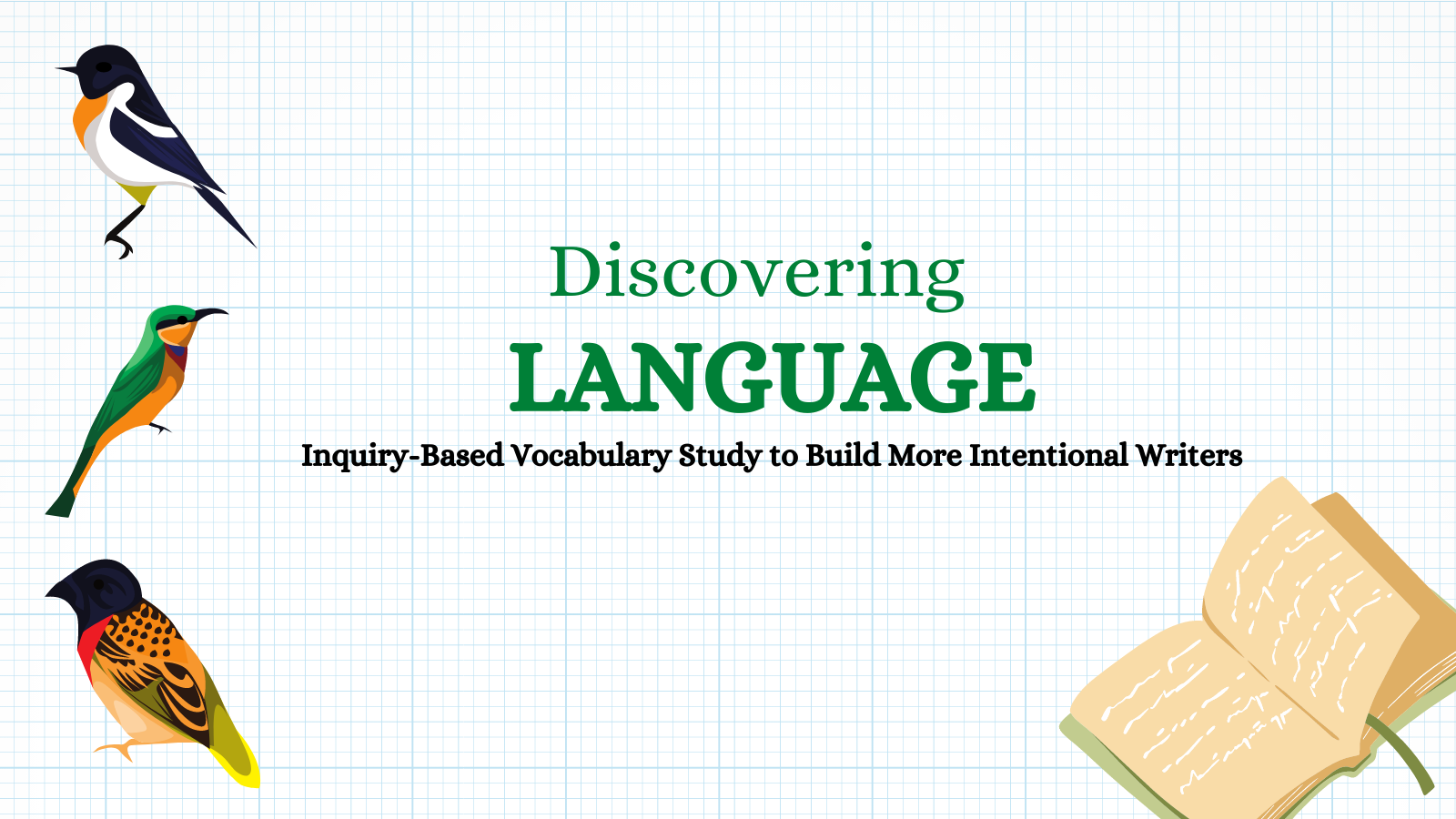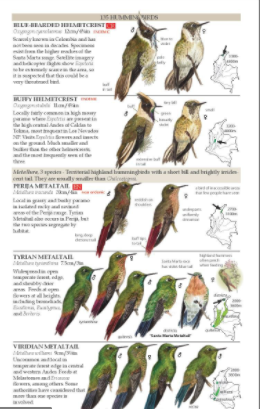
In sixteen years of teaching, I have only had less than one handful of students who truly, thoughtfully attended to word choice. It’s gritty and granular — the work of scrutinizing each and every word, turning it over in your mind, considering every other possibility, and landing on the very best word. Few middle or high schoolers I know embrace the tedium required to do this well.
But it’s not only combatting revisionary laziness that makes this task so difficult. Making serious improvements to a piece of writing at the word level requires deep and nuanced word knowledge. To recognize that you don’t quite mean this, you mean something more like that demands that you know many words and you understand the sometimes-subtle shades of meaning between them.
And there aren’t many middle or high school students who have that or who are interested enough in words to develop this extensive mental database. And, forgive me, but very little of our established vocabulary instruction fosters it.
If students need choice, bits of direct instruction, built-in opportunities for talk, and time to work with the support of a teacher to become better readers and writers, it stands to reason that they need the same to become stronger, more adept users of language.
Vocabulary Study as Inquiry + Discovery
What if, instead of copying words and definitions or doing mindless matching activities from a vocabulary workbook, students asked questions about words, explored them in myriad, research-based ways, and then recorded their discoveries about them. What if they then took these words and used them in their own writing to ratchet up the level and specificity of their writing?
What if this took no more than 30 minutes per week?
This is what I want to focus on this spring on Moving Writers — practices that help students use more precise language in their own writing by exploring words more intentionally.

My students study vocabulary over the course of the year by creating what we call a “language field guide”. Similar to a nature field guide (right), students explore:
- Where the word is found in the wild (Examples of sentences from professionals using this word)
- What is word sounds like (pronunciation, translation into another language you speak or are learning)
- A definition of the word synthesized from multiple dictionaries.
- Key identifiers of the word (roots, affixes)
- How the word behaves in the wild (what’s the part of speech? In what contexts or situations is this word typically used? What is the conversation around this word right now? What’s its emotional connotation?)
- Images associated with the word
- How this word is related to other words (synonyms, word families, antonyms)
- How this word differs from similar words.
- How the word has evolved over time (how was it used historically? What are its multiple meanings? How are those meanings different and also related?)
- How is this word connected to you? To words or concepts in your other classes? To other words or concepts in your field guide?
- Your final analysis or understanding of the word
Making a Choice-Word Field Guide
Let’s take a look at what some of this work looks like.
Historically, my students have created field guide entries in a little notebook we kept just for this purpose:

This year, we’re doing them digitally in Jamboard:


To make a choice word field guide, students need to choose a word. This word, ideally, should be a word the student is curious about — which means it doesn’t necessarily need to be a hard word or a “big” word. Some of the most interesting field guides I’ve seen have been about common, everyday words that students have thoroughly researched and explored , making fascinating discoveries and connections. Here are some places your students might find a word:
- A whole class or independently-chosen text
- A list of words cultivated by the class as words being worthy of exploration
- A word they’ve heard before +want to know more about (for instance, something their parent or grandparent frequently says)
- A word they encounter on the news, in a song, in a movie or TV show
- If all else fails, I direct them to the New York Times Word of the Day
Initially, my students will try to come up with the longest word or the goofiest word they can, but I ask them not to do this because they are about to do a lot of research on a word. They want it to be a word that will actually be useful to them in their lives as readers and writers.
Then, students spend some time exploring the word. I give 5-8 minutes per class period for one week (5 class periods), and then it’s due. (Field guides are also great back-up work when a student has completed other work early!) Field guides could also be assigned as homework for the week, or you could just dedicate 30 minutes in one fell swoop for completing an entry from top to bottom.
When we first begin field guide work, we discuss (and I model) the different ways to explore a word listed above — where to find this information, how to make sense of it. But after students have practiced, this is a lovely little routine that runs itself. And this foundation prepares students for lots of different kinds of language field guide exploration down the road.
Using a Choice-Word Field Guide in Your Writing
You could leave it there! Students studying words in depth and with nuance will always be more valuable than asking them to memorize some definitions and take a quiz. But I don’t want to leave it there. Because when a student has taken so much time considering a single word, I want them to practice thinking about how this word can fit into their repertoire as a writer + then practice actually using it.
Once students have explored a word and recorded their discoveries about it, we can now pull this language study into their writing.
If you’re currently in a writing study…
“See where the word you explored might naturally fit inside the piece you’re writing right now.”
If you’re not currently in a writing study…
“In which piece of past writing might you be able to use this word? Can you go into your older pieces and revise it to find a just-right place for the word your explored this week?”
Note: there is a possibility that a student will have explored a word that truly won’t work in their current piece. Or, they may have explored a word that truly won’t work in any of their writing (I’m thinking about students who have chosen to explore slang words, for instance.) And that’s okay — students need to have the freedom to say, “Actually, this won’t work in my writing.” A quick conversation about why not will tell you so much about the student’s understanding of their word, of tone, and of their own writing. In these conversations, after lots of listening, I might ask, “What might you write in the future that could include this word in a meaningful way?”
Why is this worth doing?
Truly meaningful language study is always worth doing — it benefits both reading + writing. But taking a few minutes to bring that language study into students’ writing begins to create a habit of mind of intentional word choice. The more we ask students to think carefully — slowly! — about the words they use in their writing AND talk to them about the words they are choosing, the more they will do it on their own as a natural part of their writing process. Taking the word they have studied into their writing takes just a few minutes and starts a practice that will benefit all of their writing.
What’s next?
Give it a shot next week — take 30-45 minutes and see what student can discover about a word they choose!
Choice word field guides are just one kind of field guide entry we can create to help students intentionally explore words! Throughout this semester, I will introduce you to other kinds of field guide entries, rhythms, and routines. Each will ask students to deeply explore language, and each will have a tie-in to students’ own writing — firmly building that linguistic bridge between reading and writing.
Today, I’ve given you the instructions + some examples of a choice word field guide, but maybe you’d like to learn more, ask some questions, try it yourself, or see it in action? I’m hosting a 1-hour webinar on Wednesday, April 14 at 7pm EST. Head here for additional details or to register!





I did this activity today with my 5th graders, and I loved it. We are going to do it again over the next several weeks to really polish what we want to include in our field guides. Thank you for telling us about this. I have always felt that my vocabulary instruction was lacking, and this is a great activity with lots of student choice and learning potential.
Andrea, thank you for sharing this with me! It fills my heart with joy as this has been my little research baby for the last three or four years. I love to hear about 5th graders doing it, too!
“practices that help students use more precise language in their own writing” – This is not just useful for students. In the last few days I have started my own blog. It isn’t something that has ever appealed to me before, I am certainly not much of a writer. I can really see though how this technique could be very useful to me especially when reading back over my work before posting. Thank you so much for taking the time to share the idea.
The links don’t work in this email except for the registration for the webinar. Great post, though!
I learn so much from all of these posts. Thank you so much! Each writer has contributed so many thought provoking topics and provided things I can implement easily into my classroom. I am a better teacher because of this. Please know that you are very appreciated!
Sent from my iPhone
>
Thanks, Erica! That means so much to all of us.